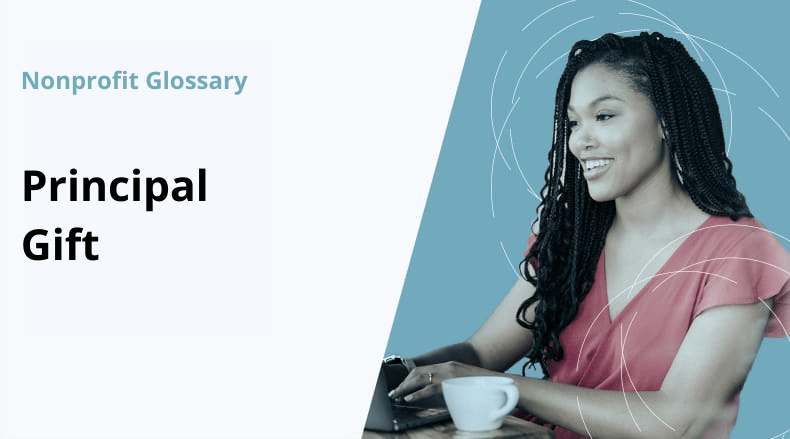Principal Gift

A principal gift is a large donation, usually defined as one valued at $1 million or more. Often, these are funded through appreciated assets.
What is a principal gift?
A principal gift is one that the organization defines as large. Commonly, nonprofits consider this to be a gift of at least $1 million in value. Often, this gift is given in an asset other than cash, such as through property.
A principal gift can be harder and rarer to get. However, when one is received, it can have a major impact on an organization. Because of this, knowing how to find potential principal donors and how to talk to them is very important.
Finding and qualifying principal donors
It’s important for an organization to learn to evaluate the potential a donor has to become a principal giver. When pursuing a principal gift, organizations should not only look at their current donors, but they should also look at potential donors as well.
One important factor in principal gifts is that they often come through appreciated assets. Many potential major donors might not have the cash to make such a large gift, but they might have the funds in other forms, such as artwork or real estate. Because of this, it’s important to not only look at a donor’s giving track record, but also at their overall potential to give. To learn a donor or potential donor’s overall potential to give, an organization should do thorough donor qualification screenings when pursuing major gifts.
Outside of screening, an important means of finding donors is through networking. Building strong relationships with current donors can lead to referrals to other potential donors. This can also be done through a strong presence in the community. Having proof of the effect an organization has had on the target population it is meant to help can build up this trust in the nonprofit, which can lead to bigger donations from current donors and increased donations from new donors.
Asking for a principal gift
Unlike many fundraising campaigns, principal gift campaigns are often more targeted. That is why an organization that has screened and qualified potential major donors should then research the donor before approaching them. In order to increase the likelihood of success, nonprofits should be able to articulate why the donor should want to give such a big gift. This means that the organization should know who the donor is and what is important to them.
The approach should fit the donor’s needs and desires, not the needs and the desires of the organization.
Ask yourself:
- Why would they want to give their assets to this organization?
- How will they be acknowledged?
- How will their gift be used to make a difference?
- How will their gift be used to help them create a legacy for themselves?
Another big step in getting a principal gift is in building awareness. Many donors might think that cash donations are their only option. When the organization approaches a potential donor or is approached by someone making a major gift, they should make sure the donor is aware that other assets might be acceptable.
Often, cash can actually be the more expensive gift for the donor to make, even when the property or other asset is valued higher. Helping donors see their options not only gives them more ways to help at less cost to them, but it also increases the likelihood that your nonprofit receives a large or principal gift.
Mitigating risk
One thing to consider when requesting principal gifts is the donor’s reputation. The larger a gift is, the less likely it is to be given anonymously or to remain anonymous. When a major donor’s name is attached to an organization, their reputation might attach; this includes their public actions and opinions. If a donor reaches out to make a large gift and you don’t want them publicly associated with your organization, you should consider how you’d like to proceed or whether or not you want to accept the gift.
Bottom line
A principal gift is often one that is valued at over $1 million. Because this is such a big gift, it can keep an organization afloat for a while. However, they are also harder to get, and it takes a more targeted approach to receive one.